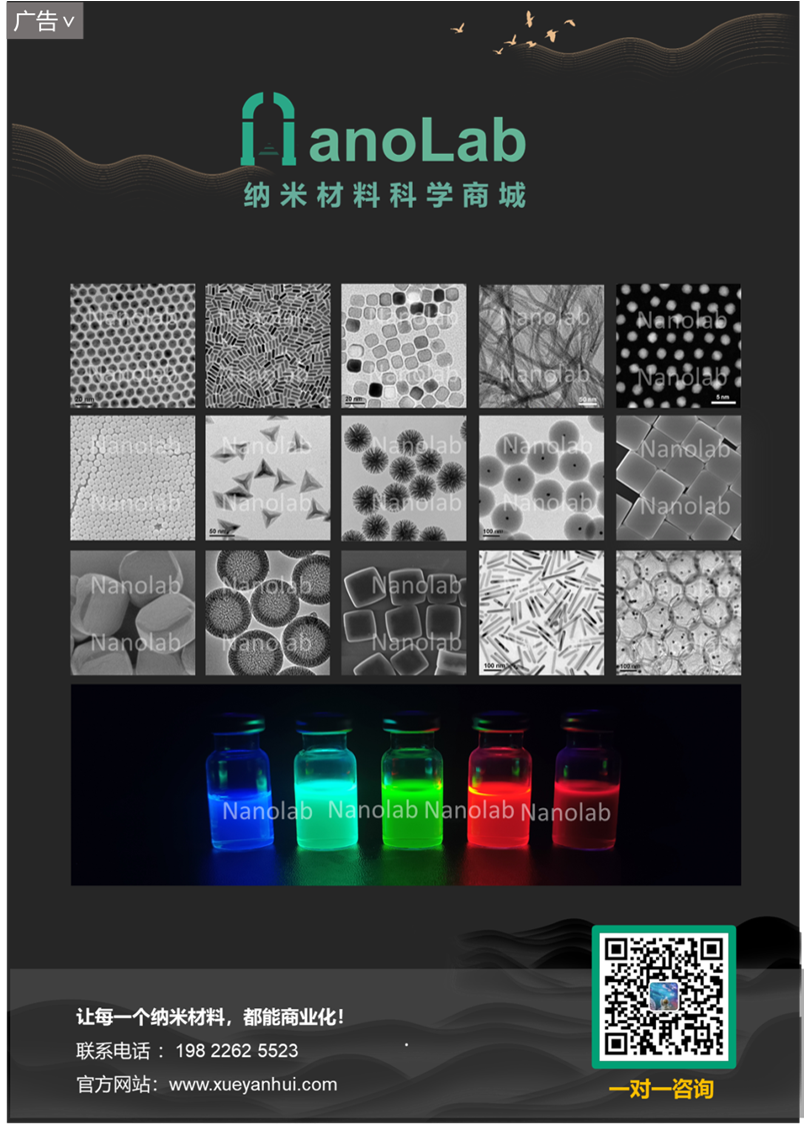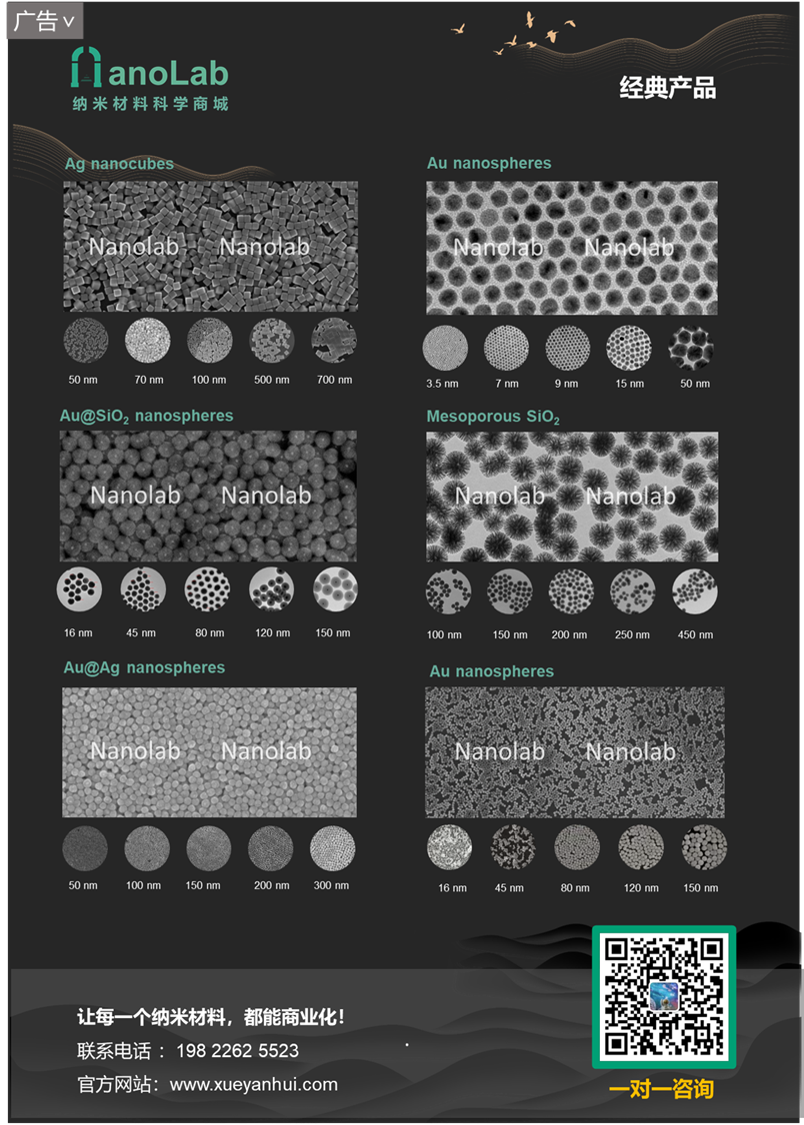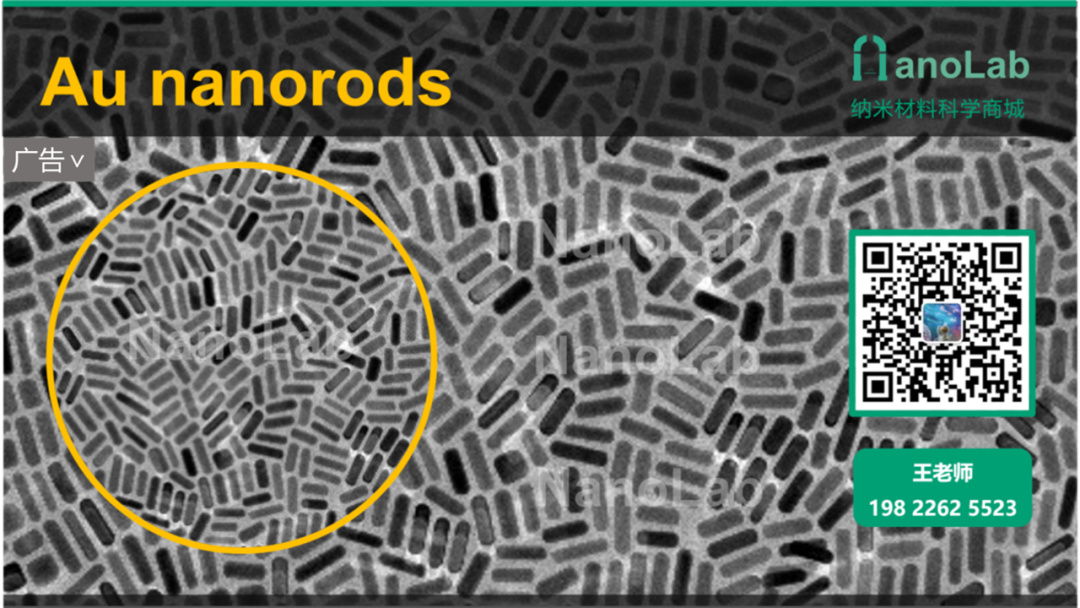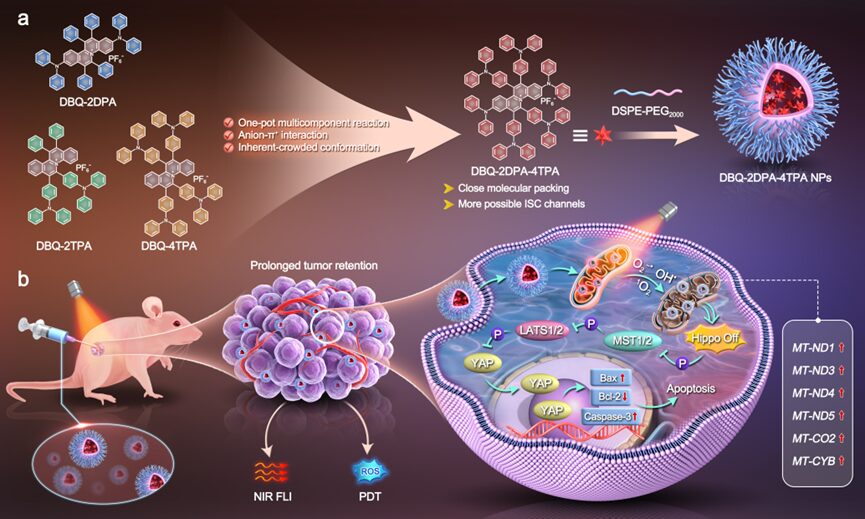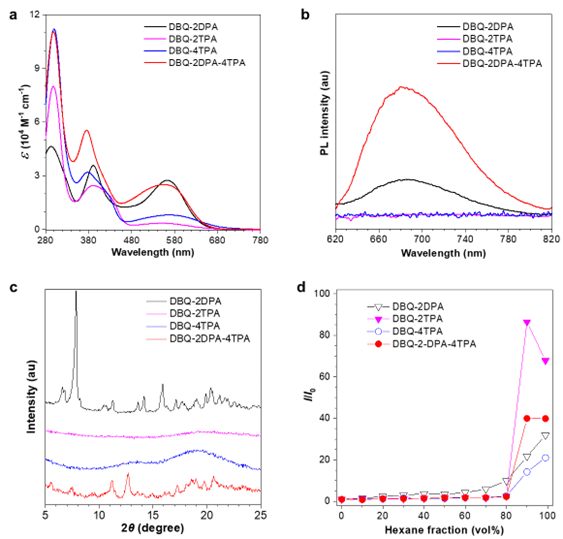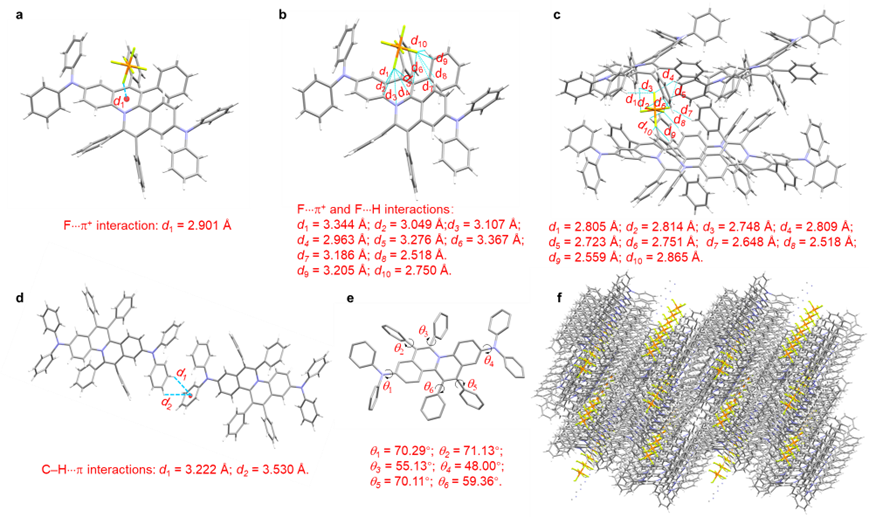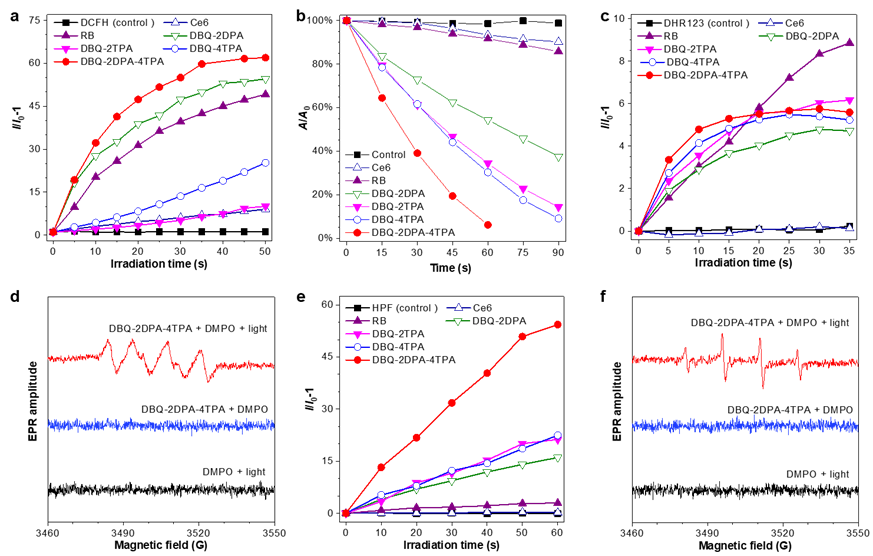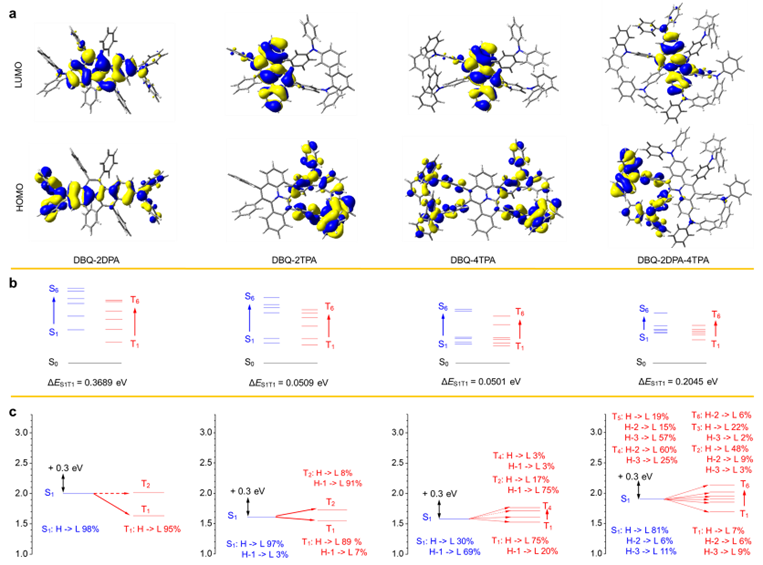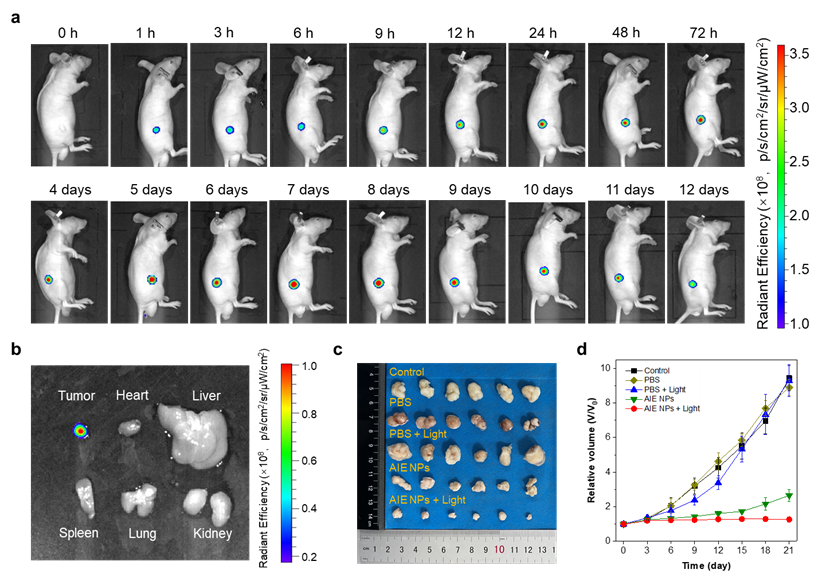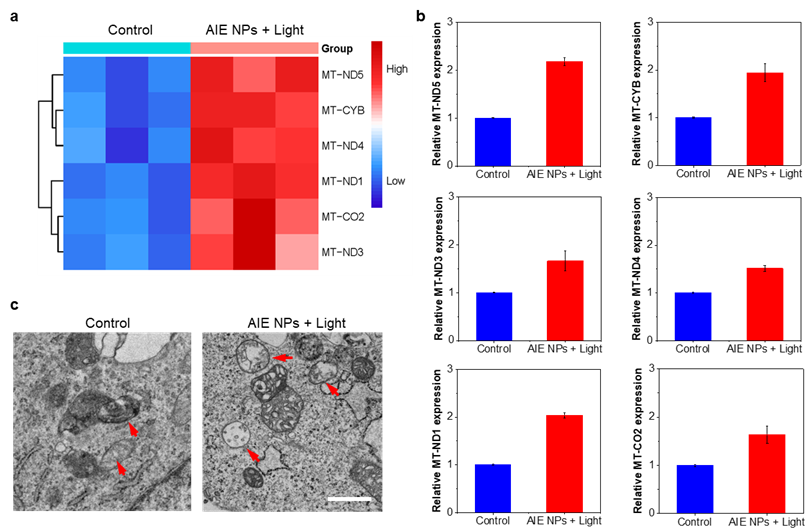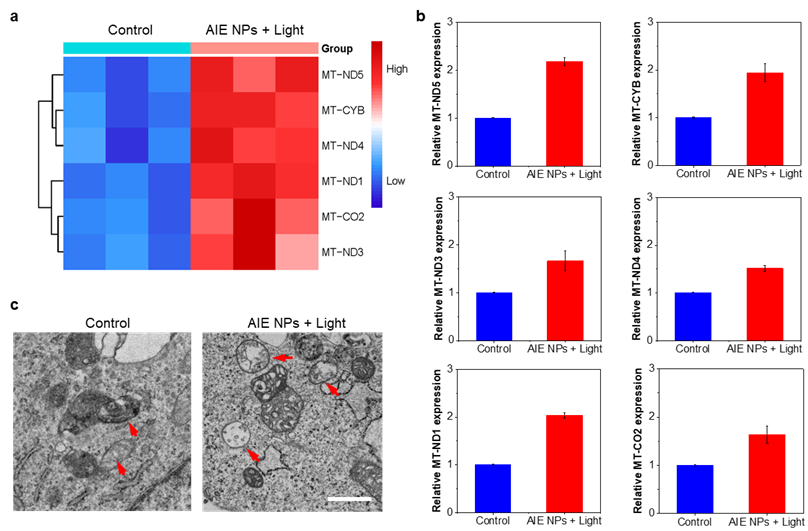Cancer poses a severe threat to human health, making the development of photosensitizers with both diagnostic and therapeutic functions significant in combating cancer. Thanks to the excellent aggregation-induced emission (AIE) efficiency and reactive oxygen species (ROS) generation capability, AIE technology shows tremendous advantages in fluorescence imaging-guided photodynamic cancer therapy (integrated diagnosis and treatment). However, the lengthy synthesis steps, suboptimal tumor retention capabilities, and unclear molecular biological mechanisms of AIEgens restrict further development in this field.
Based on this, Professor Ben Zhong Tang of the Hong Kong University of Science and Technology and Professor Liu Xiaoheng of Sichuan University proposed a design strategy combining anion-π+ interactions with spatially crowded conformations to enhance the fluorescence efficiency and ROS generation capability of AIE photosensitizers. The authors efficiently constructed AIEgens with near-infrared emission wavelengths using a one-pot multi-component synthesis method and systematically elucidated the intrinsic factors of this strategy in enhancing the aggregation state fluorescence efficiency and ROS generation capability of AIEgens. Furthermore, this work also systematically studied the molecular biological mechanisms of photodynamic therapy-induced apoptosis in cancer cells (Figure 1).
Figure 1. (a) Molecular construction strategy and nano-preparation. (b) Fluorescence imaging-guided photodynamic cancer therapy and its corresponding regulatory mechanisms.
The authors synthesized four AIE molecules with anion-π+ interactions using a concise synthetic strategy and systematically studied their photophysical properties. They found that combining anion-π+ interactions with crowded conformational strategies could endow AIEgens with higher molar extinction coefficients, fluorescence quantum efficiencies, and tight molecular packing (Figure 2).
Figure 2. Photophysical properties characterization of the constructed AIEgens.
Crystal structure analysis indicates that multiple intramolecular and intermolecular interactions (such as anion-π+ interactions, hydrogen bonds, and C-H×××π interactions) and highly distorted conformations are the intrinsic reasons for these molecules having AIE effects (Figure 3).
Figure 3. Packing modes of DBQ-2DPA crystals.
Subsequently, the authors confirmed that these cationic AIEgens simultaneously possess Type I and Type II ROS generation capabilities through the use of different ROS indicators and electron paramagnetic resonance technology. Moreover, the spatially crowded DBQ-2DPA-4TPA not only has the highest quantum yield in the aggregated state but also exhibits the optimal ROS generation capability (Figure 4).
Figure 4. Evaluation of ROS generation of DBQ-2DPA, DBQ-2TPA, DBQ-4TPA, and DBQ-2DPA-4TPA.
Comprehensive theoretical calculations and experiments indicate that DBQ-2DPA-4TPA in the aggregated state has tight molecular packing, a narrow ΔES1‑T1, and more intersystem crossing (ISC) channels, thus significantly weakening non-radiative transitions to enhance fluorescence efficiency and ROS generation capability (Figure 5).
Figure 5. Systematic theoretical calculation analysis.
The nano-aggregates composed of DBQ-2DPA-4TPA molecules demonstrate excellent performance in fluorescence imaging-guided photodynamic melanoma therapy. Additionally, these nano-aggregates exhibit superior tumor targeting and long-lasting tumor retention capabilities (Figure 6).
Figure 6. Excellent results of fluorescence imaging-guided photodynamic therapy in vivo.
Systematic molecular biological mechanism studies show that mitochondrial dysfunction is the intrinsic factor for the excellent photodynamic therapy effects of these nano-aggregates. Moreover, the apoptosis of melanoma cells was confirmed to be regulated by the Hippo–YAP signaling pathway. The authors found that after photodynamic therapy, the Hippo pathway was closed while the apoptosis pathway was activated, which was closely related to the upregulated YAP gene expression and increased accumulation of YAP in the nucleus. Subsequently, the YAP protein in the nucleus initiated the transcription and high expression of apoptosis-related genes (Figures 7 and 8).
Figure 7. Regulatory mechanism study of photodynamic-induced cancer cell death.
Figure 8. Investigation of mitochondrial gene and morphology changes after photodynamic therapy.
This work proposes a strategy combining anion-π+ interactions with crowded conformations to efficiently suppress non-radiative transitions, thereby achieving enhancements in the fluorescence efficiency and ROS generation capabilities of aggregated AIEgens. Furthermore, the corresponding AIEgen-mediated efficient photodynamic melanoma therapy mechanism via the Hippo-YAP signaling pathway has been systematically elucidated.
This achievement was recently published in ACS Nano, with the first authors being postdoctoral researcher Yang Shiping from the Hong Kong University of Science and Technology (Ph.D. from Sichuan University, supervised by Vice President You Jingsong) and Associate Researcher Yu Hongchi from Sichuan University (Ph.D. from the research group of Professor Liu Xiaoheng). The paper also received assistance from Dr. Liu Junkai, Dr. Ou Xinwen, and Dr. Teng Kunxu, among others.
https://doi.org/10.1021/acsnano.3c05080
Integrating Anion-π+ Interaction and Crowded Conformation to Develop Multifunctional NIR AIEgen for Effective Tumor Theranostics via Hippo-YAP Pathway
Shiping Yang,Hongchi Yu, Junkai Liu, Lunjie Ma,Zhe Hou, Jia Ma, Michael Z. Miao, Ryan T. K. Kwok, Jianwei Sun, Herman H. Y. Sung, Ian D. Williams, Jacky W. Y. Lam, Xiaoheng Liu, and Ben Zhong Tang
ACS Nano 2023, DOI: 10.1021/acsnano.3c05080
Biomedical Academic QQ Group: 752247802
Biomaterials Academic QQ Group: 779474982
Wearable Devices Academic QQ Group: 1032109706
Analytical Sensing Academic QQ Group: 530727948
Biomimetic Materials Academic QQ Group: 111658060
Polymer Materials Academic QQ Group: 1053468397
High-quality nanomaterials
Some products have been published in top journals such as Science and Nature. Some products have been mass-produced and are serving multiple enterprises, including state-owned enterprises and listed companies.
